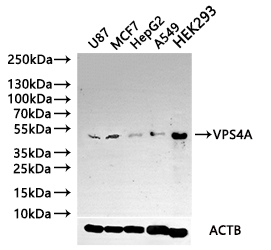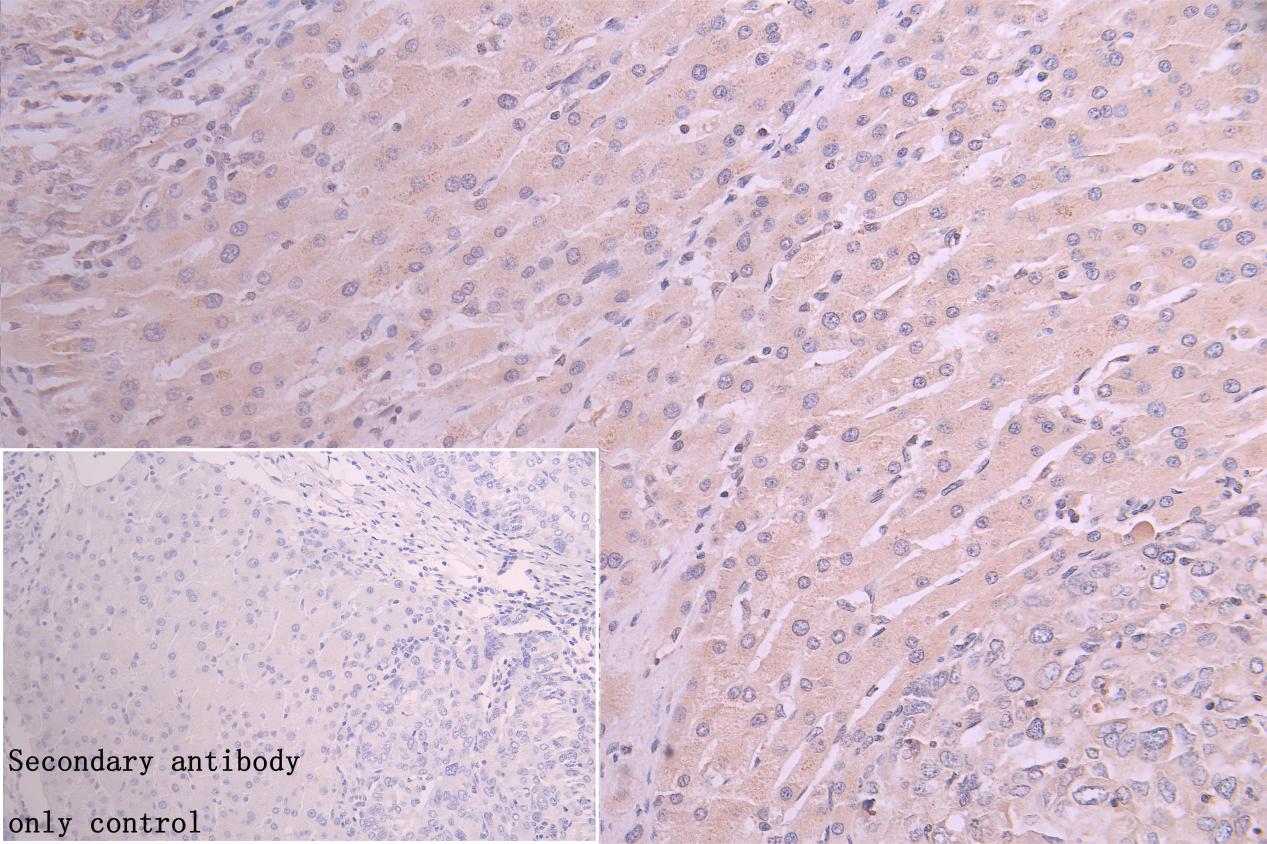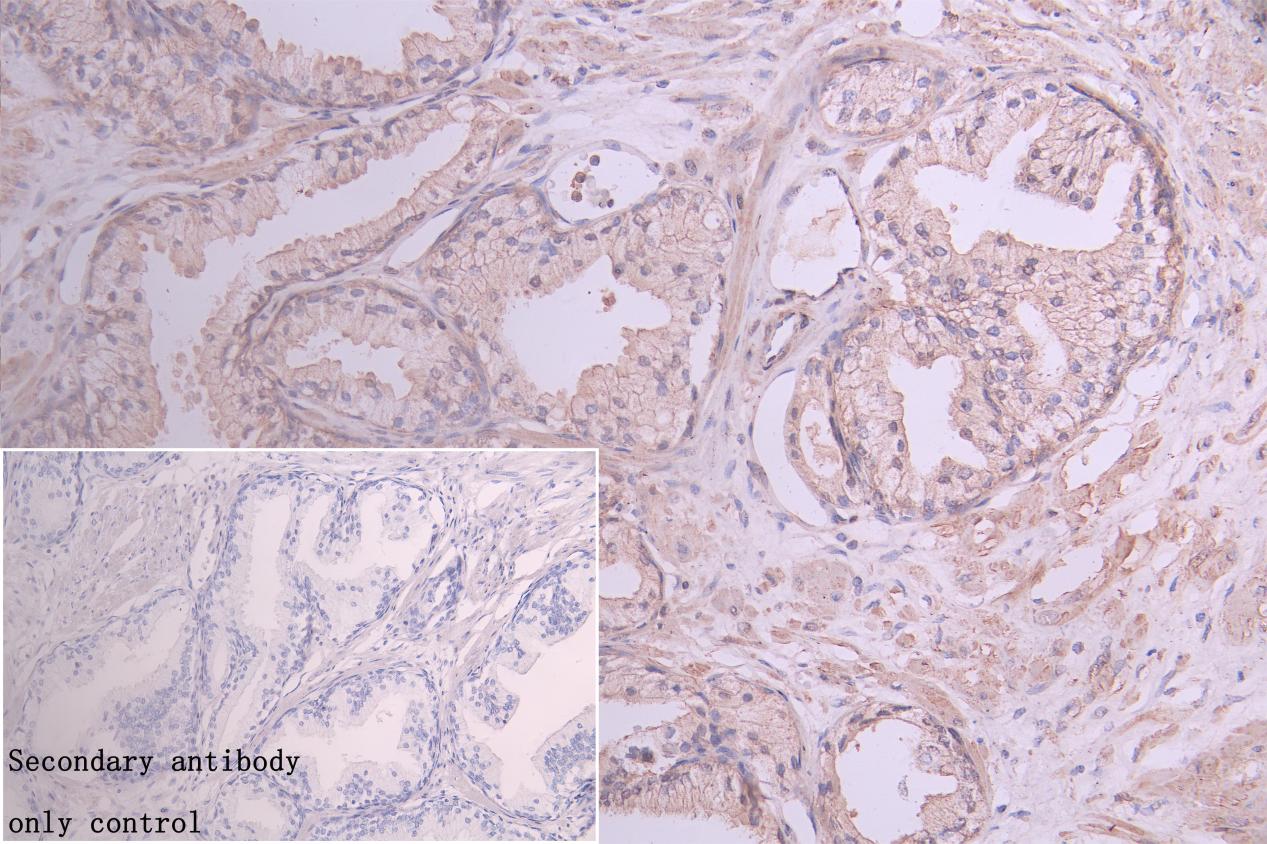Generating the polyclonal antibody against the recombinant human VPS4A protein (1-120aa) involves immunizing a rabbit with the target antigen, collecting the resulting rabbit serum, and purifying the antibody-containing serum through antigen affinity chromatography.
The purified VPS4A polyclonal antibody has been characterized by ELISA, WB, and IHC to confirm their specificity and sensitivity to VPS4A. This antibody can react with human, mouse, and rat VPS4A proteins. VPS4A mainly catalyzes the disassembly of ESCRT complexes, which are involved in the sorting and trafficking of membrane proteins in the endocytic pathway. It is also implicated in cytokinesis and virus budding.






